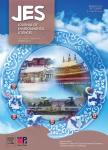A framework for investigating the air quality variation characteristics based on the monitoring data: Case study for Beijing during 2013–2016
A framework for investigating the air quality variation characteristics based on the monitoring data: Case study for Beijing during 2013–2016作者机构:Key Laboratory of Beijing on Regional Air Pollution Control College of Environmental & Energy Engineering Beijing University of Technology Beijing Municipal Environmental Monitoring Center
出 版 物:《Journal of Environmental Sciences》 (环境科学学报(英文版))
年 卷 期:2019年第31卷第7期
页 面:225-237页
核心收录:
学科分类:0830[工学-环境科学与工程(可授工学、理学、农学学位)] 07[理学] 070602[理学-大气物理学与大气环境] 0706[理学-大气科学]
基 金:financially supported by the National Key R&D Program of China(2017YFC 0209905) the Natural Sciences Foundation of China(No.51878012,51638001) the project supported by Beijing Municipal Education Commission of Science and Technology(No.KM201610005019) the New Talent Program of Beijing University of Technology(No.2017-RX(1)-10)
主 题:Monitoring data analysis Air quality variations Airflow directions Pollution periods Beijing
摘 要:In this study, an analysis framework based on the regular monitoring data was proposed for investigating the annual/inter-annual air quality variation and the contributions from different factors(i.e., seasons, pollution periods and airflow directions), through a case study in Beijing from 2013 to 2016. The results showed that the annual mean concentrations(MC) of PM_(2.5), SO_2, NO_2 and CO had decreased with annual mean ratios of 7.5%, 28.6%, 4.6%and 15.5% from 2013 to 2016, respectively. Among seasons, the MC in winter contributed the largest fractions(25.8%~46.4%) to the annual MC, and the change of MC in summer contributed most to the inter-annual MC variation(IMCV) of PM_(2.5) and NO2. For different pollution periods, gradually increase of frequency of S-1(PM_(2.5), 0~ 75 μg/m^3) made S-1 become the largest contributor(28.8%) to the MC of PM_(2.5) in 2016, it had a negative contribution(-13.1%) to the IMCV of PM_(2.5); obvious decreases of frequencies of heavily polluted and severely polluted dominated(44.7% and 39.5%) the IMCV of PM_(2.5). For different airflow directions, the MC of pollutants under the south airflow had the most significant decrease(22.5%~62.5%), and those decrease contributed most to the IMCV of PM_(2.5)(143.3%),SO2(72.0%), NO_2(55.5%) and CO(190.3%); the west airflow had negative influences to the IMCV of PM_(2.5), NO_2 and CO. The framework is helpful for further analysis and utilization of the large amounts of monitoring data; and the analysis results can provide scientific supports for the formulation or adjustment of further air pollution mitigation policy.



